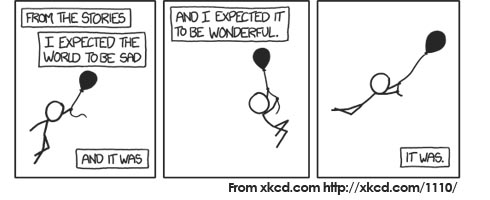
My grandpa used to own a camera shop. Although I didn’t get a chance to meet him before he passed away, I grew up surrounded by photographers – and that might explain why I have a special connection to images and videos (or why I can hardly remember people’s names but can recall images I have seen – at least that’s my excuse :P).
So, what could be better than wrapping up the year by checking out some stunning science images from 2012? (warning – you might need a whole afternoon to go through my list below)
Start with:
Nature News Images of The Year
A great general collection of 11 images. Nature‘s favourite images of the year. A good intro before moving on to other collections.
Don’t miss the following:
Wellcome Image Award 2012 – Get Closer to Science
16 amazing images, from cancer cells in motion, caffeine crystals, to open heart surgery; images are coupled with background information, interesting scientific facts, and how the images were chosen. This would also be a great site for educational purposes. Even better, images on the site are under Creative Commons License (I am impressed!), so you can re-use the images following their terms of use. (by the way, the featured image for this post is the caffeine crystals)
Best Astronomy Images of 2012, Slate Magazine
Chosen by Phil Plait (of Bad Astronomy), one of the most popular science bloggers. Astronomy images are really, really cool…
Nikon Small World Competition 2012 – Top 20 Images
Images taken through the light microscope. We cannot see it with our bare eyes, but there is an amazing world right around us.
Science Magazine The Year in Science Pictures 2012
A collection of weekly images posted by Science through ScienceShots. These images were chosen because the images are sometimes the stories themselves. Each image comes with a short description (actually, many of them have very interesting research stories).
The Royal Observatory Greenwich Astronomer Photographer of The Year
I mentioned this in an earlier post in October. You can also view a video produced by BBC, with voice over by Chris Lintott and Olivia Johnson.
And if you have more time…
Popular Science 13 Stunning Photos from The Wildlife Photographer of The Year Competition
Australian Geographic Eureka Award – Best Science Photos of 2012
UK Natural History Museum Veolia Environnement Wildlife Photographer of the Year
The Scientist 3rd Annual Labby Award – Best Images and Videos in Life Science

 I had an interesting night yesterday.
I had an interesting night yesterday.



